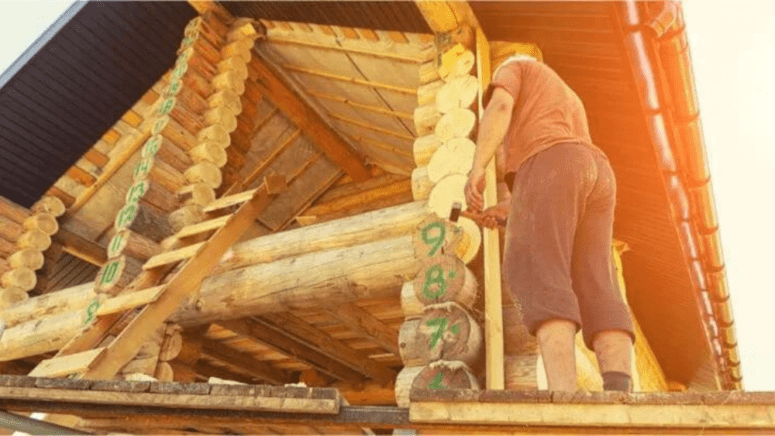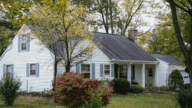How to Find (And Qualify For) a Build Your Own House Program
- Published on
- 8 min read
-
 Evette Zalvino, Contributing AuthorClose
Evette Zalvino, Contributing AuthorClose Evette Zalvino Contributing Author
Evette Zalvino Contributing AuthorEvette is just your average HGTV fan who dreams of having a home worthy of being on one of those shows. When she isn't writing for HomeLight, she's working at her local real estate office. In her downtime, you'll find her searching for the next great hiking trail in her area.
-
 Alexandra Lee, Associate EditorClose
Alexandra Lee, Associate EditorClose Alexandra Lee Associate Editor
Alexandra Lee Associate EditorAlexandra is an associate editor of HomeLight.com. Previously, she served as a writer and social media manager at Santa Barbara Life & Style Magazine, in addition to interning at the nonprofit honors society Phi Beta Kappa. Alexandra holds a bachelor's degree in communication and global studies from UC Santa Barbara, and she has three years of experience reporting on topics including international travel, luxury properties, celebrity interviews, fine dining, and more.
Did you know that the median price to buy a house in the United States is almost $427,000 as of June 2024? That’s a whopping 158.8% increase since 2000, when buying a house would cost around $165,000! It’s no wonder that 48% of renters are under 30 years old — they can’t afford to buy even a simple starter home.
The truth is, there is a shortage of affordable housing in the United States. According to Rent.com, while rent prices are increasing, significant growth is hindered by the high housing costs that keep potential buyers circulating within the rental market, instead of becoming homeowners. The Midwest is taking the lead in terms of rent increases, with Minnesota spiking 13% year-over-year in March 2024. While Florida had the greatest rent decreases year-over-year, at -8.8%, median rent in the state is still high at $2,117 per month.
So, what are people to do? One option is a build-your-own-house program.
What is a build your own house program?
People who have a limited income often feel like trying to buy a house the “traditional way” is impossible. Either they can’t get approved for a mortgage, they don’t have enough money for a down payment, or their credit score is too low. When it feels like the cards are stacked against you, it’s understandable to feel like you’ll be a renter forever.
That doesn’t have to be the case! You can apply to a build-your-own-house program. Habitat for Humanity is an example of a build-your-own-house program; another example is the USDA (United States Department of Agriculture) Mutual Self-Help Housing Program, which is executed by local organizations. There are also state-run programs that can provide help.
Mutual Self-Help Housing Technical Assistance Grants
The Mutual Self-Help Housing Technical Assistance Grant program gives low-income household members the chance to become homeowners. The program is run by the USDA, and participants work together by investing “sweat equity” to build houses for each family (6 to 12 families) in their program group.
Participants must agree to complete 65% of the labor for each home, and the houses cannot be occupied until all of the houses for the entire group are complete. Sweat equity is required because it reduces the overall cost, helping families get one step closer to homeownership.
Eligibility requirements
Applicants must be U.S. citizens, 18 years old or older. They must agree to be the owner and occupant of the home, and they cannot have owned property in the last three years. They are also required to participate in workshops and training programs to help them on the path to homeownership.
Income requirements
Interested individuals and families must demonstrate low incomes. A low-income family is described as earning between 50% to 80% of the area’s median income, and a very low-income family is defined as making less than 50% of the area’s median income.
Applicants must also prove they do not have adequate housing, and that they can afford the mortgage payments, plus taxes, and insurance. These payments are usually 22% to 26% of an applicant’s total income. An applicant’s debt-to-income ratio cannot exceed 41%, including mortgage payments.
Credit requirements
The applicant must show that they cannot get approved for a loan through other sources, but that they have a credit score of 640 or higher. They cannot have any collections or judgments against them within the past six months.
Grants and direct loans
Mutual Self-Help Housing programs are supported by Section 523 Grants and Section 502 Direct Loans. In most cases, a Section 502 direct loan is given in conjunction with a mutual self-help housing program. Still, some areas may use conventional loans to provide construction and permanent loans to the participants.
Section 523 grant
Section 523 grants are only available in low-income and very-low-income rural and tribal areas. Grants can range between $200,000 and $1 million, but most are for around $500,000. The money is used to pay salaries, rent, and office expenses for the non-profit organization running their local self-help housing program.
Qualified organizations will get an administrative grant for two years and are required to build a certain number of houses within that time. The size of the grant will depend on the number of homes built and the cost for a similar, contractor-built home from the same area. For example, if a Self-Help house is built for $175,000, and the average comparable contractor house is $200,000, the USDA can award the organization between $24,000 and $30,000 per home built.
You can fill out an application by contacting your local rural development office.
Section 502 direct loan
A Section 502 direct loan helps low-income families and individuals purchase a home. The funds can be used to build, repair, or renovate an existing dwelling. Money can also be used to refinance an existing mortgage, so the property doesn’t go into foreclosure.
Unlike conventional loans, which typically offer a 30-year term, 502 direct loans have a 33-year term, but it can be extended to 38 years if the applicant’s income is less than 60% of the area median income and they cannot afford the payment for a 33-year loan. Applicants are not required to put down a down payment.
The amount of payment for principal, interest, taxes, and insurance will be determined by calculating which amount is higher: 24% of the applicant’s adjusted annual income, or multiplying the principal and interest to 1% of the Rural Development loan, plus taxes and insurance. The applicant will have to pay the higher amount.
Eligible organizations qualify for self-help housing programs
There are 100 organizations across 40 states that participate in Mutual Self-Help Housing program grants. Habitat for Humanity is the most well-known private non-profit organization, but government non-profit organizations and federally recognized tribes can also apply.
Unfortunately, since the program is only available in certain areas, you will have to check the USDA property eligibility site to see if your rural area is eligible.
Habitat for Humanity
Habitat for Humanity is a non-profit organization that helps people build their own homes and teaches them about the many responsibilities that go along with being a homeowner, such as managing personal finances, learning about mortgages, and how to maintain a home.
Qualification requirements
Individuals who apply for this program will have to prove that they need housing that is both safe and affordable. If they’re selected to participate in the program, they must be willing to put in at least 200 to 400 hours of sweat equity. This can be in the form of actively helping to build the house, or attending classes and workshops that teach the responsibilities of homeownership.
Applicants must show that their gross household income is between 30% to 80% of the median income for that area. They must show proof of having a steady job and income for two years or longer. They have to cover closing costs, which vary by region — in Worcester County, Maryland, average closing costs are between $2,500 and $4,000 — plus a down payment for the house itself (around $500).
If you’re interested in finding out more information about Habitat for Humanity and how to apply, check out this webpage.
Build your own house programs can change your life
The path to homeownership isn’t easy, especially for low- to very-low-income families. According to the Census Bureau’s most recent data, the national poverty rate stands at 11.5%, with over 37.9 million people living in poverty. The average family of four living under the poverty threshold is surviving on just $31,200 per year.
When you consider how expensive rent can be across the nation, owning a home is outside the realm of possibility for many of these families. Fortunately, Mutual Self-Help Housing programs can help a struggling family to live in a decent home that is clean, safe, and newly built!
If you or someone you know is in dire need of affordable housing and on a limited income, let them know that there is hope. Let them know that owning a home is within reach, thanks to Mutual Self-Help Housing programs and Section 502 direct loans. Direct them to the USDA eligibility webpage to see if they qualify, and if their rural area is eligible.
Federal and state-run programs and non-profit organizations are making homeownership a reality for many low to very-low-income earners. As of 2024, the Mutual Self-Help Housing program has been around for almost 60 years, and has completed tens of thousands of homes — that’s tens of thousands of families and inidivduals who are finally living the American Dream of owning their little piece of the world.
Header Image Source: (Shutterstock.com/petr tkachenko 83)




